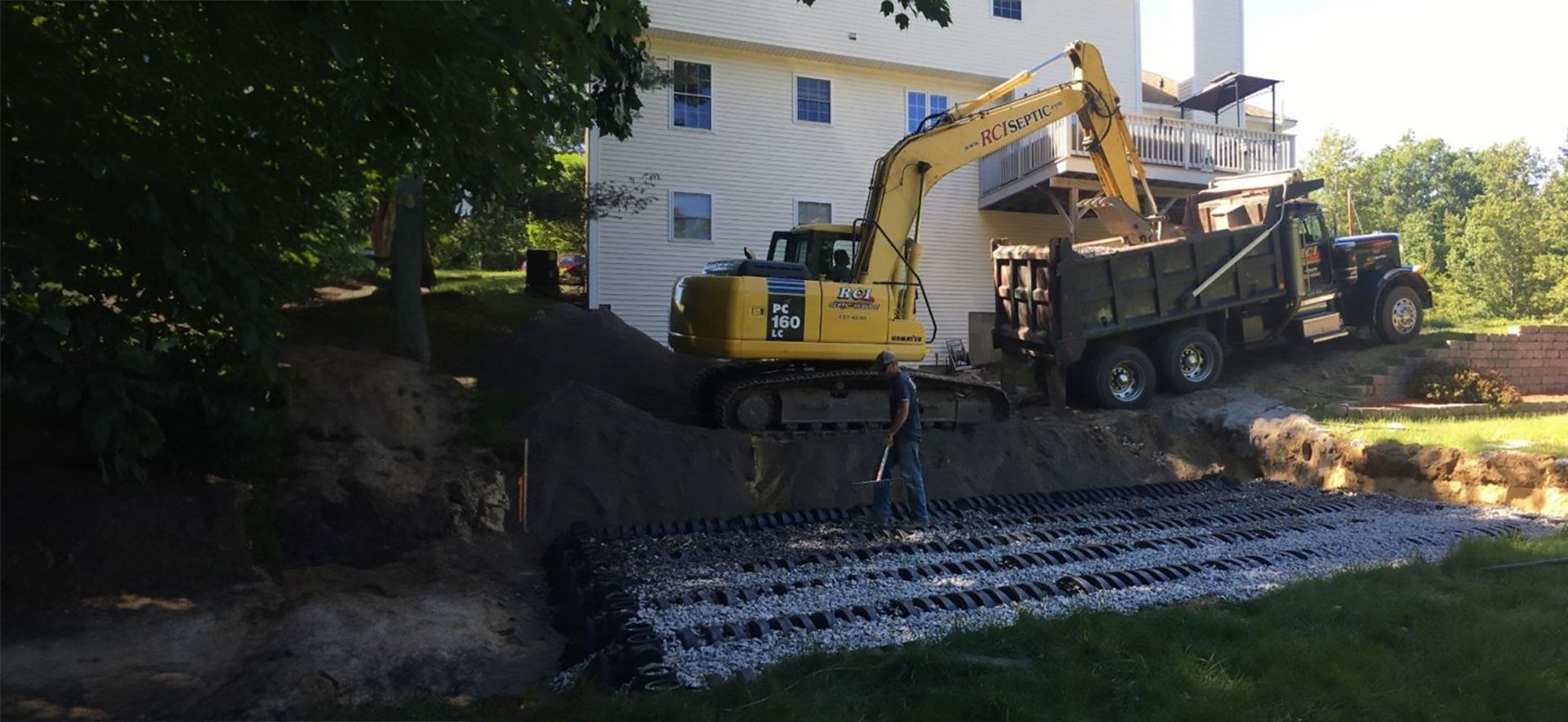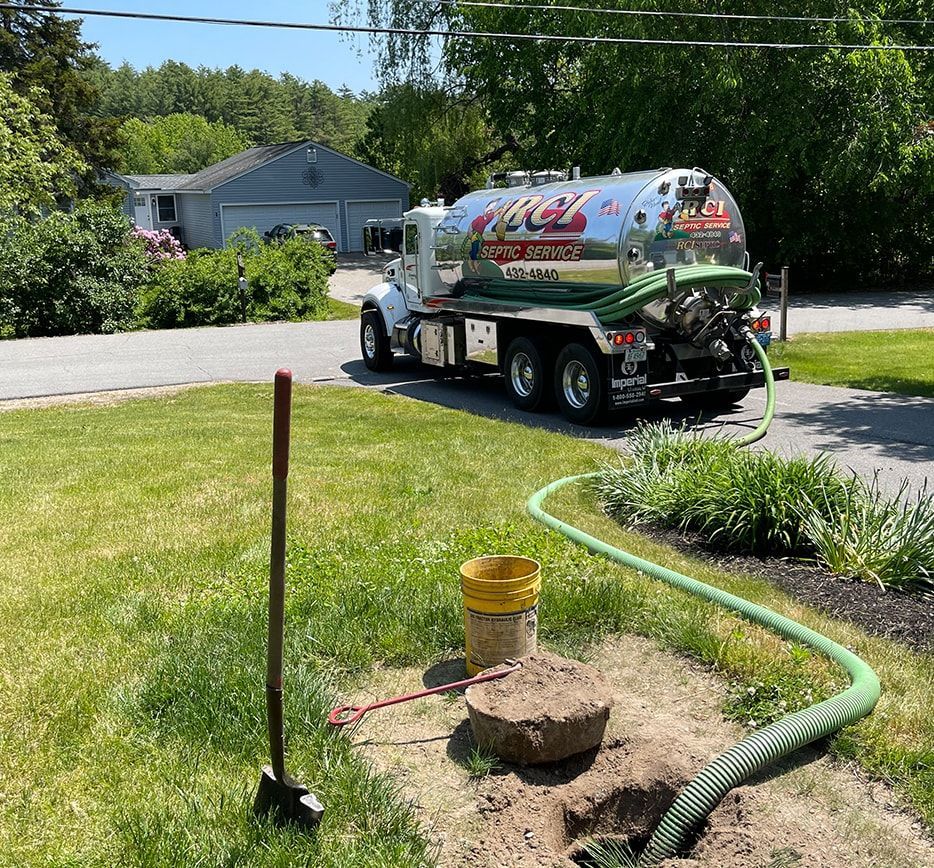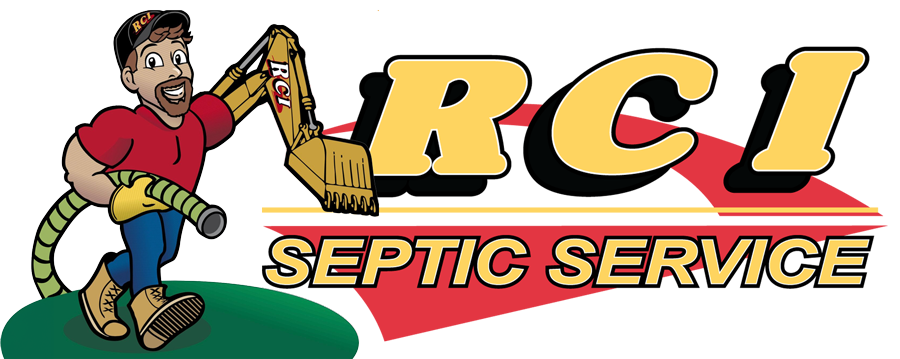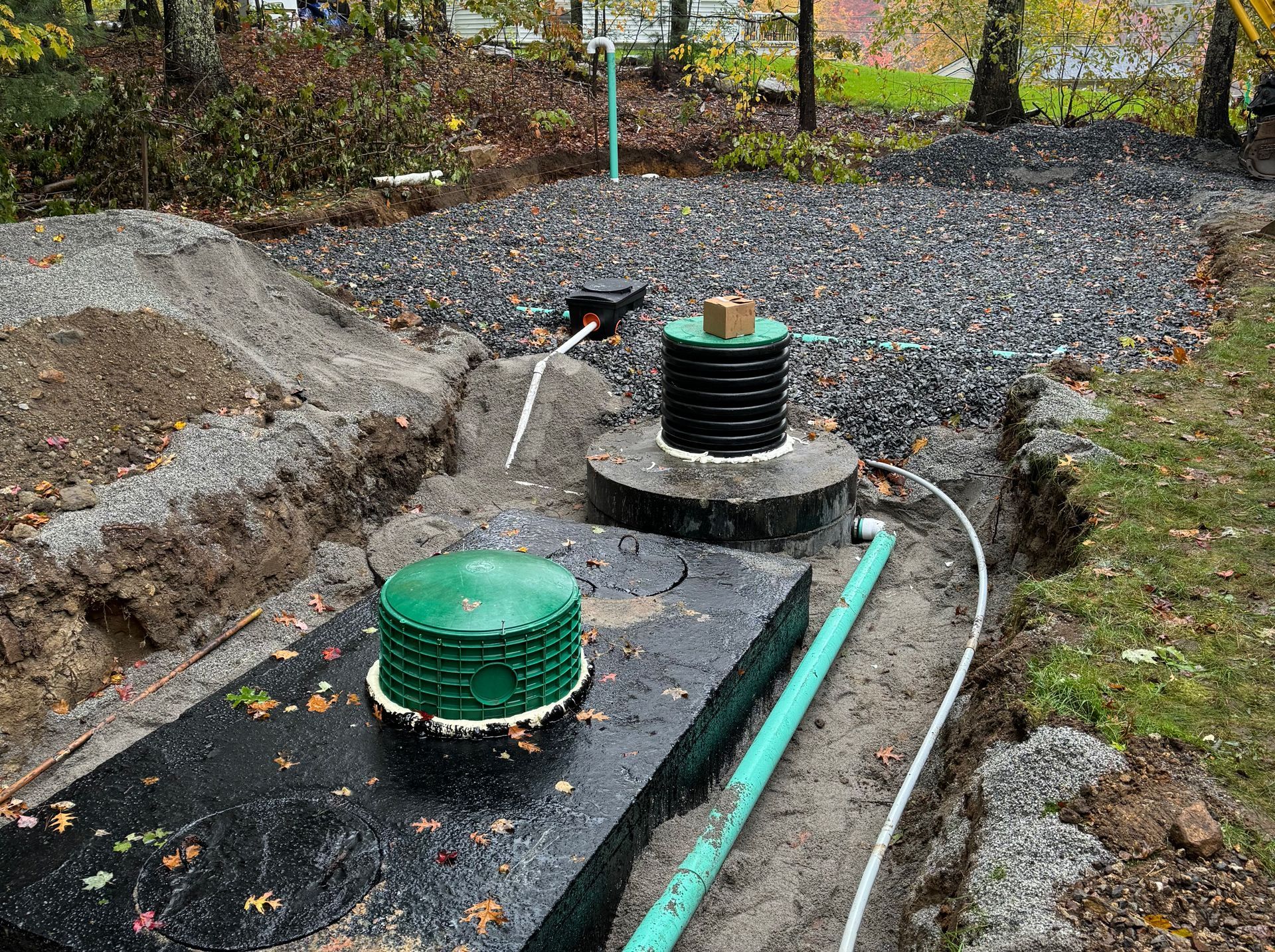Understanding Septic Installations: Key Tips and Best Practices
Septic installations are essential for properties not connected to a municipal sewer system. This process involves planning, selecting the right system, and ensuring compliance with state and town regulations. Understanding each step helps you make informed decisions and avoid issues. This article covers everything you need to know about septic installations, from planning to maintenance.
Key Takeaways
- Septic systems are crucial for managing wastewater on properties without municipal sewer access, comprising components like a septic tank, drain field, and soil for effective treatment.
- Proper planning and obtaining necessary permits are essential for septic system installation to ensure compliance with local regulations and avoid legal complications.
- Selecting the appropriate septic system type based on soil characteristics and household needs is vital for optimal wastewater treatment and system longevity.
What is a Septic System Installation?
Septic systems are decentralized wastewater treatment systems designed to treat and dispose of household wastewater on-site. These systems are essential for properties not connected to a municipal sewer system, providing an efficient and eco-friendly solution for managing wastewater. A typical septic system consists of three main components: the septic tank, the drain field, and the soil surrounding the drain field. The primary function of the septic tank is to provide initial wastewater treatment by separating solids from liquids. The treated effluent is then returned to the property’s soil and groundwater through the drain field.
Septic tanks are commonly made from materials such as concrete and polyethylene, ensuring durability and longevity. The drain field, also known as the leach field, is a network of perforated pipes buried in shallow, gravel-filled trenches. These pipes allow the treated wastewater to disperse evenly into the soil, where natural processes further purify it. Chamber systems, another type of septic technology, consist of connected chambers that provide additional treatment.
Septic systems are widely used in rural, urban, and suburban areas, offering a reliable alternative to centralized sewer systems. They are also referred to as decentralized wastewater treatment systems or onsite wastewater treatment systems, highlighting their role in managing wastewater on the property itself. Understanding the components and functions of septic systems enables property owners to make informed decisions about their installation and maintenance.
Planning Your Septic System Installation
Proper planning for septic system installation ensures effective function and compliance with local regulations. The process begins with an initial site evaluation to determine soil type and permeability, which significantly impact the system’s performance. A test pit is dug to determine the seasonal high water table. Conducting a percolation test helps assess the soil’s absorption rate, essential for proper septic system function. Soil testing ensures proper drainage and helps avoid pollution and legal penalties.
Once the site evaluation is complete, the next step is obtaining the necessary permits. The application for a septic system permit typically includes detailed plans and specifications of the proposed installation. Local regulations often require specific permits for the installation and modification of septic systems, and the permitting authority may have stricter requirements than state regulations. Failure to obtain the necessary permits can lead to legal complications and potential fines.
Regulatory compliance ensures the installation meets local health and environmental standards. Local regulations may impose restrictions on the types of septic systems that can be installed, so it’s crucial to consult with a septic professional and local authorities to ensure compliance.
Thorough planning helps avoid potential issues, ensuring a smooth and efficient installation process.
Choosing the Right Septic System for Your Property
Choosing the right septic system for your property involves considering various factors such as soil characteristics, household size, and water usage habits. Soil characteristics play a significant role in determining the type of septic system suitable for a property, as they affect the absorption capacity and overall performance of the drain field. Additionally, household size and water usage habits dictate the required capacity for a septic system, ensuring it can handle the wastewater generated by your household.
Residential septic systems primarily come in two types. These are conventional septic systems and advanced systems. A conventional septic system is often less expensive to install and consists of a septic tank and drain field. However, advanced treatment systems, such as aerobic treatment units, can manage wastewater more efficiently in challenging environmental conditions. These advanced systems enhance treatment by injecting additional oxygen to promote bacterial activity, making them suitable for properties with inadequate soil, high water tables, or proximity to sensitive water bodies.
Matching the septic system type to your household needs and soil conditions ensures effective wastewater management. Consulting with a septic professional can help you determine the best system for your property, taking into account local regulations and environmental factors. Choosing the right septic system ensures long-term efficiency and reliability.
Steps Involved in Septic System Installation

Installing a septic system involves several crucial steps to ensure proper functionality and compliance with local regulations. The process begins with site preparation, followed by the installation of the septic tank and the layout of the drain field. Each step requires careful planning and execution to avoid common issues and ensure a successful installation.
One important aspect of the installation process is the bed bottom Inspection, which is required before transferring property served by a private sewage disposal system. This inspection verifies compliance and functionality, ensuring the system meets local regulations and standards.
Site Preparation
Proper site preparation is crucial for a successful septic system installation. This involves excavating and leveling the installation site to prevent runoff and installation errors. Excavation methods must prevent environmental damage and ensure the system is installed at the correct depth. The layout should also factor in the natural slope of the land to facilitate optimal wastewater flow.
Thorough site preparation helps avoid potential issues and ensures a smooth installation process. Proper site preparation also helps protect the environment and ensures the septic system functions effectively.
Installing the Septic Tank
Installing the septic tank is a critical step in the septic system installation process. When wastewater is generated in the household, such as when flushing toilets or doing laundry, it flows into the septic tank. The plumbing in your home connects to the septic tank through the main sewer line, typically a 4-inch diameter pipe.
The septic tank itself is designed to separate heavy solids from the wastewater, allowing the treated effluent to flow into the drain field for further treatment. Proper installation of the septic tank ensures efficient wastewater management and minimizes the risk of system failures.
Laying Out the Drain Field
The drain field, also known as the leach field, is a network of perforated pipes buried in shallow, gravel-filled trenches. These pipes distribute treated wastewater evenly into the soil treatment area for filtration and further treatment. Bacteria in the soil play a crucial role in breaking down contaminants in the wastewater flows.
The depth of a typical septic drain field is two feet above the seasonal high water table, with local regulations and property requirements determining the length and spacing between pipes. In large installations, perforated pipes can reach a maximum length of 100 feet. This is the upper limit for their use in such applications. Proper layout and installation of the drain field ensure efficient wastewater treatment and compliance with local regulations.
Common Issues During Septic Installations
Several common issues can arise during septic system installations, which can lead to costly repairs and health risks if not addressed promptly. One major issue is the lack of space for a drain field, especially in older subdivisions with small lots and no planned replacement area for septic systems. Additionally, unsuitable soils can hinder the system’s performance and lead to system failures.
Tree and shrub roots can grow into the drain lines and tank, causing significant issues and potentially damaging the system. Poor maintenance is another common cause of septic system failure, leading to sewage surfacing, odors, and pipe discharging to water bodies. Installing a garbage disposal can also increase the need for routine pumping of the septic system.
A failed septic system can cause property values to decline and pose potential health risks due to the release of untreated human waste. Regular maintenance and proper planning can help prevent these issues and ensure the long-term functionality of the failing septic systems.
Maintenance Tips for Newly Installed Septic Systems

Maintaining a newly installed septic system is crucial for ensuring its longevity and efficiency. Annual inspections are recommended to check sludge levels and the condition of tank components. It’s essential to pump your septic tank regularly to prevent issues like drain field clogging. Septic tanks should be inspected and pumped every 1 to 3 years, depending on usage.
Maintaining accurate records of your septic system’s location and maintenance history is essential for future reference and troubleshooting. Runoff from roofs and driveways should be directed away from the septic tank and drain field to prevent overloading the system. Protecting the drain field from heavy vehicles and livestock is necessary to prevent soil compaction and damage.
Water conservation practices can also help reduce the volume of wastewater that needs treatment. Avoid flushing harmful materials, such as grease and chemicals, into the septic system, as they can disrupt the treatment process and cause damage. Consulting local health departments can provide additional guidance on maintaining your septic system.
Hiring a Professional for Septic System Installation
Hiring a professional for septic system installation is essential to ensure the job is done correctly and complies with local regulations. Valid licenses and certifications are key indicators of a septic contractor’s qualifications and ability to manage necessary legal requirements. Checking for licensing, reputation, and references before hiring a septic system professional can help you find a reliable and experienced contractor.
A reputable septic professional will have the expertise and equipment needed to handle the installation process efficiently and safely. Hiring a qualified professional ensures correct installation and helps avoid future issues.
Financing Options for Septic System Projects
Financing options tailored to septic system projects are available through various institutions. St. Mary’s Bank offers financing options specifically designed for septic system projects, making it easier for property owners to afford the necessary installations and repairs. Additionally, low-interest loans are available for septic system replacements in rural areas, providing financial support to those in need.
Exploring financing options helps property owners manage costs and ensure proper installation and maintenance of septic systems.
Benefits of Proper Septic System Installation

Proper septic system installation offers numerous benefits, including effective wastewater treatment and environmental protection. Well-installed septic systems enhance the quality of surface water and contribute to groundwater replenishment. Effective wastewater treatment through a septic system can recharge groundwater and enhance aquifer levels.
Decentralized wastewater treatment systems can be a cost-efficient solution for communities, minimizing the need for extensive infrastructure and saving communities from the high costs associated with centralized sewer systems. Funding programs, such as the Clean Water State Revolving Fund and the USDA’s Rural Home Loans Program, provide financial support for septic system installations, making it easier for property owners to manage the costs.
Local community funding programs may also exist to assist residents with septic system financial needs, especially in areas with high septic system usage. Proper septic system installation allows property owners to benefit from effective wastewater management and environmental protection.
Summary
In summary, understanding the intricacies of septic system installations is crucial for ensuring effective wastewater management and avoiding potential issues. Proper planning, choosing the right system, and hiring qualified professionals are essential steps in the installation process. Regular maintenance and exploring financing options can help property owners manage the costs and ensure the long-term functionality of their septic systems.
By following the guidance provided in this comprehensive guide, property owners can make informed decisions about their septic system installations and maintenance. We encourage you to contact RCI Septic Service for professional assistance and support in managing your septic system needs.
Frequently Asked Questions
What are the main components of a septic system?**
The main components of a septic system are the septic tank, the drain field, and the surrounding soil. Together, they function to treat and dispose of wastewater effectively on-site.
How often should a septic tank be pumped?** **?
A septic tank should be pumped every 1 to 3 years, depending on factors such as household size and usage. Regular maintenance is crucial to ensure its effective operation and prevent costly repairs.
What factors should I consider when choosing a septic system for my property?
When choosing a septic system, it is crucial to consider soil characteristics, household size, water usage habits, and compliance with local regulations. Consulting a septic professional can provide valuable insights tailored to your specific situation.
What are some common issues during septic system installations?
Common issues during septic system installations often involve insufficient land for a drain field, inappropriate soil conditions, intrusion from tree and shrub roots, and inadequate maintenance. Addressing these concerns upfront is crucial for ensuring a functional and efficient septic system.
Are there financing options available for septic system projects?** **?
Yes, financing options such as low-interest loans for septic system replacements are available through institutions like St. Mary's Bank, especially in rural areas. This makes it easier to manage the costs associated with septic system projects.


